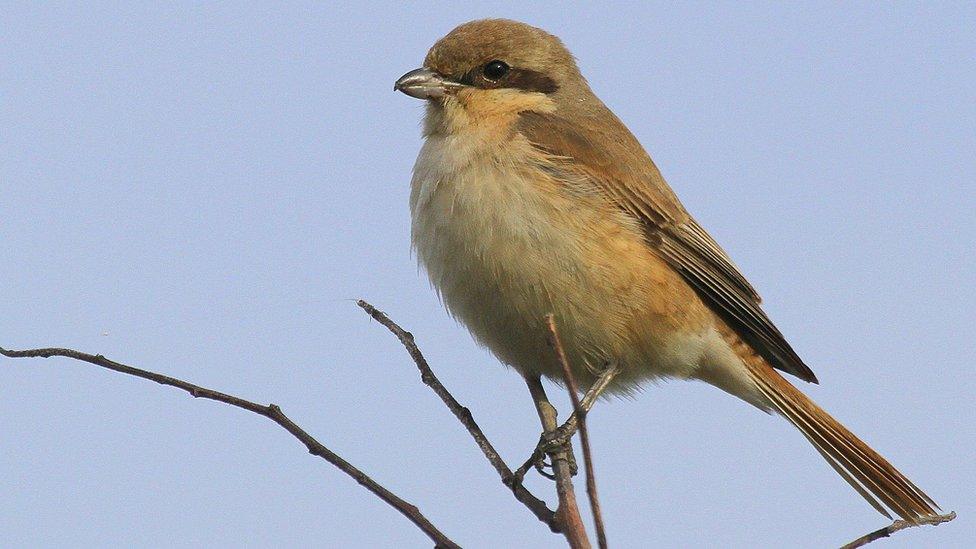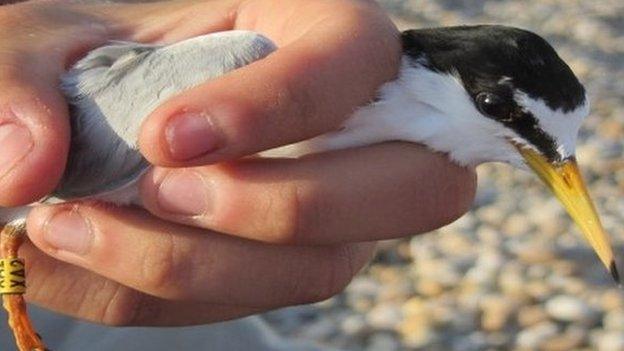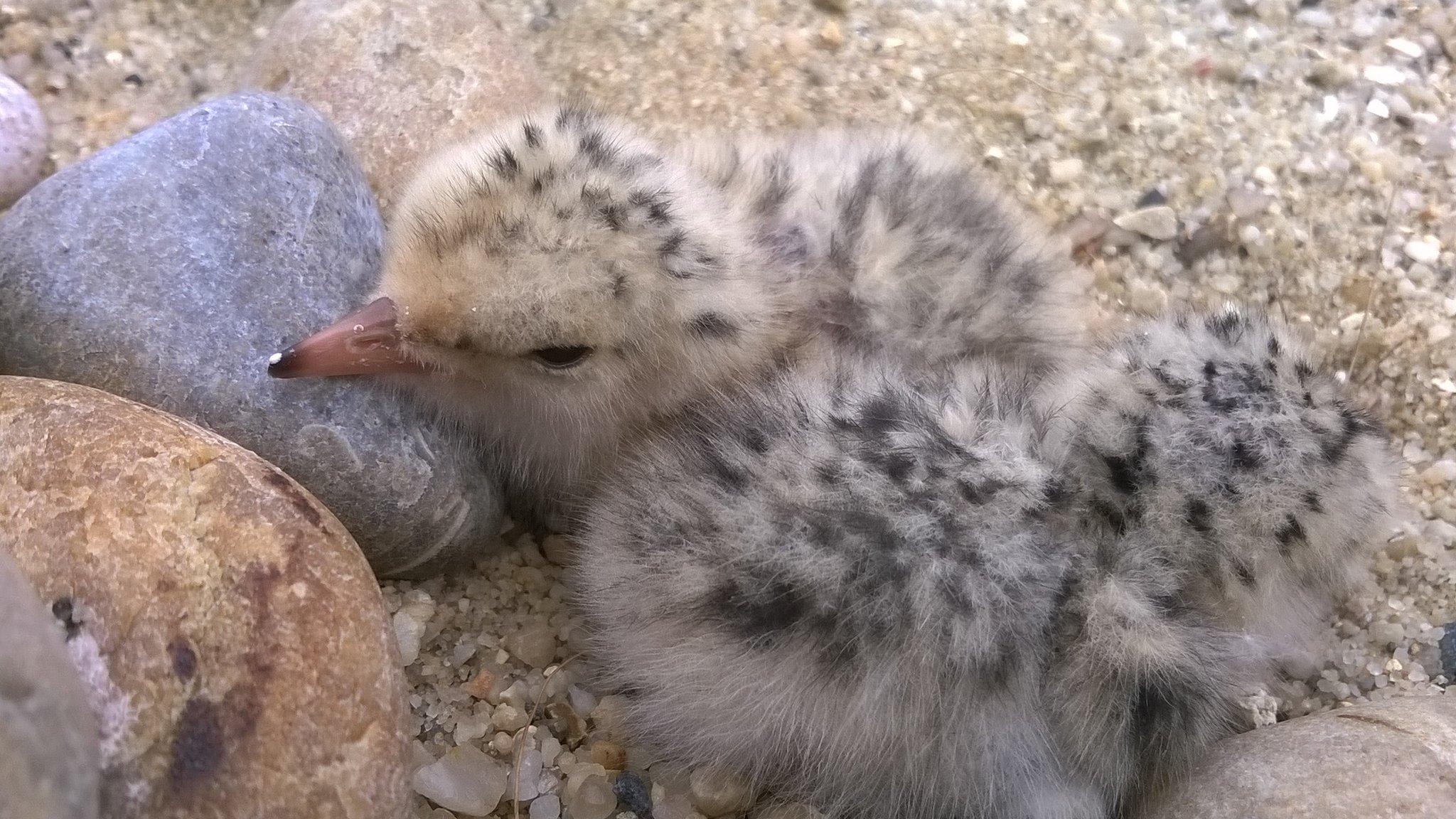Hundreds flock to see American Yellow Warbler in Portland
- Published
It is believed to be the first time one has been seen in England
Hundreds of bird enthusiasts have flocked to the Isle of Portland following sightings of an American Yellow Warbler.
The native American bird is thought to have been blown across the Atlantic by Hurricane Gert while migrating to South America.
Martin Cade, of Portland Bird Observatory, said it was "pretty amazing" to see the warbler.
It is believed to be the first time one has been seen in England.
The birds are common in the US and migrate annually between North and South America.
Mr Cade said the warbler could have been caught up in storms while crossing the Caribbean and blown across to Europe with "a hell of a tailwind".
Another one has also been spotted on Mizen Head on the south west tip of Ireland in recent days.
Mr Cade said the bird, about the size of a robin, was "feeding well and appeared active".
He said it was likely that the warbler could feed up before heading south to Spain and Africa.

Bird enthusiasts rushed to Portland when news of the arrival emerged
Twitchers came from as far as the Midlands, South Wales and Yorkshire as news of the arrival spread on Monday.
Brett Spencer, from Weymouth, said it was an "exceptional occurrence" in the UK, with the bird only having been previously recorded on offshore Scottish and Welsh islands.
"With social media you get to hear about things instantly so if you've got the time you can drop stuff and go instantly. It's a bit mad.
"I've been birding for over 35 years, so it's quite a big deal. It was obviously a real goodie for a lot of people."
An RSPB spokesman said prior to this week there were only nine UK records of sightings, with no accepted records in England.
He said the arrival of birds in Portland and Co Cork would suggest they were picked up in Hurricane Gert while migrating southwards to Central or South America.
Portland Bill is Dorset's most southerly point, jutting out nearly six miles into the English Channel.
It is often the last landfall that migrating birds see before heading off to mainland Europe or Africa.
- Published1 November 2016

- Published5 August 2015

- Published8 August 2014
